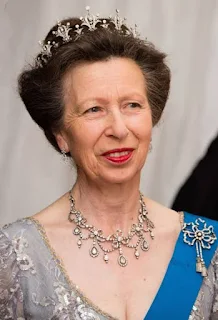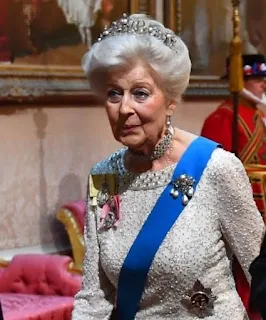The number of working members of the British royal family further reduced to just eleven after the departure of Prince Andrew, the Duke of York, from public life.
The Queen's second son stepped back from royal role following the allegations of Virginia Giuffre of sexual abuse that happened in 2000.
Prince Harry, the Duke of Sussex, stepped back from royal duties in March 2020 and finalized in February 2021. He too, was stripped of his military appointments and royal patronages.
The current working royals
As working members of the royal family, with the exception of the Prince of Wales, their costs of performing royal duties are covered under the Sovereign Grant, which is an annual payment by the UK government to the monarch in running the monarchy.
Prince Charles is exempted from this grant. His finances and activities are being funded by the income from his Duchy of Cornwall. He also received portion of income from the Duchy of Lancaster.
With the departure of the two senior male royals from public life, the following are the remaining members of the royal family who are considered working royals, performing royal duty officially in support to the Queen.
Names are arranged based on the seniority of the members in the line of succession (wives take their corresponding place of seniority based on the rank of their respective husbands).
1. The Prince of Wales - Prince Charles, the Queen's heir-apparent and eldest son. He is also the Duke of Cornwall and Duke of Rothesay when in Scotland.
2. The Duchess of Cornwall - Camilla is the second wife of the Prince of Wales and thus, performing royal duty in her own capacity.
3. The Duke of Cambridge - Prince William, eldest son of the Prince of Wales. Second in line to the throne.
4. The Duchess of Cambridge - Catherine, wife of the Duke of Cambridge
5. The Earl of Wessex - Prince Edward, youngest son of the Queen. He is currently 14th in line of succession to the throne.
6. The Countess of Wessex - Sophie, wife of the Earl of Wessex.
7. The Princess Royal - Princess Anne, only daughter of the Queen, but her husband, Tim Laurence, and children, Peter Phillips and Zara Tindall, are not working family members. Seventeen in line of succession to the throne.
8. The Duke of Gloucester - Prince Richard. First cousin of the Queen. He is the only surviving child of the Queen's paternal uncle, Prince Henry, Duke of Gloucester. His children and grandchildren never carry royal duties.
9. The Duchess of Gloucester - wife of Prince Richard, the Duke of Gloucester. She and her husband currently lived in Kensington Palace.
10. The Duke of Kent - Prince Edward. First cousin of the Queen. Eldest son of Prince George, Duke of Kent, paternal uncle of the Queen. However, his wife, Katharine, is no longer a working member of the royal family since retiring from public life. She also converted into Roman Catholicism.
The Duke of Kent's children and grandchildren are not working members of the royal family but attend royal family functions on important occasions like Trooping the Colors.
11. Princess Alexandra, The Lady Ogilvy - First cousin of the Queen. Younger sister of Prince Edward, the Duke of Kent. Her two children and grandchildren never carry royal duties. Princess Alexandra is widowed since 2004.
The Duke of Kent and Princess Alexandra have one younger brother, Prince Michael of Kent, but he does not carry royal duty, and also his wife, Princess Michael of Kent.
The following members of the British royal family are not working royals:
- Peter Phillips and Zara Phillips-Tindall - children of the Princess Royal
- Tim Laurence - husband of the Princess Royal.
- Princess Beatrice and Princess Eugenie - daughters of the Duke of York
- Lady Louise Windsor and James, Viscount Severn - children of the Earl of Wessex
- David Armstrong-Jones, 2nd Earl of Snowdon - nephew of the Queen
- Lady Sarah Chatto - niece of the Queen
- Prince Michael of Kent - first cousin of the Queen
- Prince Harry, the Duke of Sussex - stepped back from royal role in 2020
- Prince Andrew, the Duke of York - stepped back from royal role since 2019
- A grant is to be paid to heirs to the throne who are not Dukes of Cornwall to put them in a similar financial position as if they were Dukes of Cornwall.
- If the heir is not the Duke of Cornwall and is over 18, the heir is to receive a grant based on Duchy revenues. The monarch receives the Duchy revenues, and the Sovereign Grant is reduced by an equal amount.
- If the Duke of Cornwall is a minor, 90% of the revenues of the Duchy go to the monarch and the Sovereign Grant is reduced accordingly.



















0 Comments